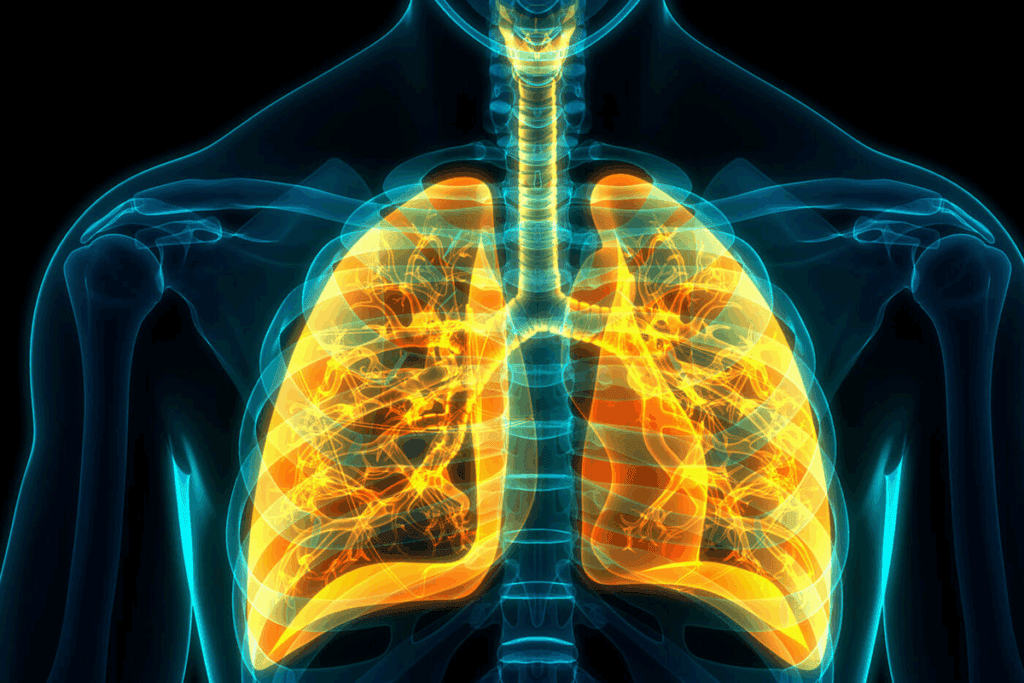Last Updated on November 24, 2025 by

Chronic respiratory disorders like chronic obstructive pulmonary disease (COPD) and idiopathic pulmonary fibrosis (IPF) are big health worries worldwide. Even with new medical treatments, these conditions can’t be cured.
COPD is a top cause of death globally, leading to 3.5 million deaths in 2021. IPF is a rare disease with irreversible lung scarring. It’s vital to understand how these diseases affect patients and their families.
We’ll look into the details of COPD and IPF. We’ll talk about their effects and the current treatment options. Explore specific lung diseases that currently have no cure, focusing on management and research advancements in respiratory health.
Incurable lung diseases are becoming more common. We need to understand why and how they affect us. We’ll look at what makes some respiratory conditions hard to cure and their impact worldwide.
Many things make respiratory disorders hard to cure. Genetics, the environment, and lifestyle choices are key. For example, pollution and smoking can make breathing problems worse. Genetic factors can also increase the risk of certain diseases.
Environmental and lifestyle factors greatly affect how severe respiratory diseases are. People living in polluted areas often have worse symptoms. This shows how important it is to live in a clean environment.

Chronic respiratory diseases, like COPD, are a big problem worldwide. Most COPD deaths in people under 70 happen in poorer countries. This shows how unequal healthcare can be.
COPD is one of the top causes of health issues globally. It’s important to find better ways to manage and prevent it. This can help improve life for those with these diseases.
COPD includes diseases like emphysema and chronic bronchitis. These conditions limit airflow in the lungs. They are big health problems worldwide, causing a lot of suffering and death.

Emphysema damages the air sacs in the lungs, making it hard to breathe. This damage comes from long-term exposure to harmful substances, like cigarette smoke. Once damaged, the lungs can’t be fixed, and the condition worsens over time.
Key features of emphysema include:
Chronic bronchitis causes long-term inflammation in the airways. This leads to a persistent cough and mucus production. It’s often caused by smoking and pollution. The inflammation can cause repeated infections and damage the lungs further.
The symptoms of chronic bronchitis can significantly impact daily life, making it hard to do everyday tasks because of coughing and breathing problems.
COPD is hard to cure because the lung damage is permanent. Treatments can help manage symptoms and slow the disease’s progress. But, there’s no way to fix the damaged lung tissue yet. Scientists are working on new treatments to stop or reverse COPD.
Current management strategies include:
Idiopathic Pulmonary Fibrosis (IPF) is a chronic and fatal disease. It causes lung tissue to scar, leading to breathing problems. The term “idiopathic” means we don’t know what causes it, making treatment hard.
IPF gets worse at different rates for everyone. Symptoms like shortness of breath and cough get worse over time. This makes life harder for those with the disease, who need a full care plan.
Finding good treatments for IPF is tough. We don’t know what causes it, making it hard to find the right medicine. Treatments need to help now and slow the disease’s progress. Research is ongoing, but it’s a big challenge.
There are a few treatments for IPF, like medicines that slow lung function decline. But they don’t work for everyone. For severe cases, lung transplants are an option, but they’re rare. Supportive care, like oxygen and exercise, helps manage symptoms and improve life quality.
Dealing with IPF requires a complex treatment plan. Current treatments have their limits, but research gives us hope for better options in the future.
Many incurable lung conditions are tough for patients and doctors to handle. They can make life harder and need careful management.
Pulmonary Arterial Hypertension (PAH) is a rare and serious lung condition. It causes high blood pressure in the lung arteries. This makes the right heart work too hard, leading to failure.
Symptoms include shortness of breath, fatigue, and chest pain. While treatments help manage symptoms, there’s no cure for PAH.
Cystic Fibrosis (CF) is a genetic disorder that harms the lungs, digestive system, and other organs. It makes thick, sticky mucus that clogs airways and traps bacteria. This leads to lung damage and infections.
Current treatments focus on managing symptoms and preventing complications. But finding a cure is a big challenge.
Alpha-1 Antitrypsin Deficiency is a genetic disorder that can harm the lungs and liver. It lowers the enzyme alpha-1 antitrypsin, which protects the lungs. This can cause COPD, even in non-smokers.
Management includes avoiding smoking and other lung irritants. Some cases may also need replacement therapy.
End-Stage Interstitial Lung Disease is a group of conditions with lung tissue scarring. This scarring causes shortness of breath and reduced lung function. While some forms can be managed, end-stage disease often has a poor outlook.
Treatment options are limited, and lung transplantation may be considered in some cases.
In conclusion, these incurable lung diseases are big challenges. Knowing their characteristics and treatment options is key to effective patient care.
Understanding how to prevent chronic respiratory diseases is key. By tackling risk factors, finding diseases early, and starting public health programs, we can make a big difference. This helps lower the number of cases and slow down how fast these diseases spread.
One of the best ways to stop chronic respiratory diseases is to tackle risk factors we can change. Tobacco smoking and air pollution are big causes of COPD and other breathing problems. Here are some ways to cut down on these risks:
Finding and treating diseases early is very important. This way, doctors can help slow down how fast the disease gets worse. Here are some important steps:
Public health efforts are also very important. They can include warning people about the dangers of smoking or improving indoor air quality. Good public health actions include:
By using all these methods together, we can really help prevent and manage chronic respiratory diseases. This will improve the lives of those who suffer from these conditions.
We’ve looked into the tough challenges of incurable respiratory diseases. This includes Chronic Obstructive Pulmonary Disease (COPD) and Idiopathic Pulmonary Fibrosis (IPF). These diseases greatly affect patients’ lives.
Even without a cure, treatments and prevention can help manage symptoms. This improves life quality for those with chronic respiratory diseases. It’s key to keep researching and finding new treatments.
Preventing these diseases is also important. We can do this by tackling risk factors early and detecting them sooner. Supporting public health and raising awareness about respiratory health is vital.
Together, we can better understand and treat these diseases. This will make a big difference in the lives of those dealing with them.
The most common incurable respiratory disorders include COPD, IPF, PAH, CF, and Alpha-1 antitrypsin deficiency. These conditions greatly affect a person’s quality of life and life expectancy.
Respiratory disorders can be incurable due to genetic predispositions, environmental factors, and lifestyle choices. For example, COPD is often caused by smoking, air pollution, and genetics, leading to permanent lung damage.
COPD, including emphysema and chronic bronchitis, causes permanent damage to lung tissue. Emphysema destroys air sacs, while chronic bronchitis causes persistent inflammation in airways.
There is no cure for IPF, and treatments are limited in stopping disease progression. Current treatments aim to slow lung scarring and manage symptoms.
While some incurable lung diseases have genetic components, many can be prevented or slowed by addressing risk factors like smoking and air pollution. Early detection and intervention are key in managing these conditions.
PAH is characterized by high blood pressure in lung arteries. Symptoms include shortness of breath, fatigue, and chest pain, significantly impacting quality of life.
CF causes the production of thick, sticky mucus that clogs airways, making breathing difficult. This can lead to recurrent infections and lung damage.
Alpha-1 antitrypsin deficiency is a genetic disorder that can cause lung disease, including COPD. It leads to uncontrolled inflammation and lung damage due to a deficiency of the enzyme alpha-1 antitrypsin.
Developing treatments for incurable lung diseases is challenging due to their complex nature. The limited understanding of causes and the need for targeted therapies that can halt or reverse disease progression are major hurdles.
Public health initiatives can reduce chronic respiratory disorders by raising awareness about risk factors. They encourage healthy behaviours and implement policies to reduce air pollution and smoking rates.
Subscribe to our e-newsletter to stay informed about the latest innovations in the world of health and exclusive offers!